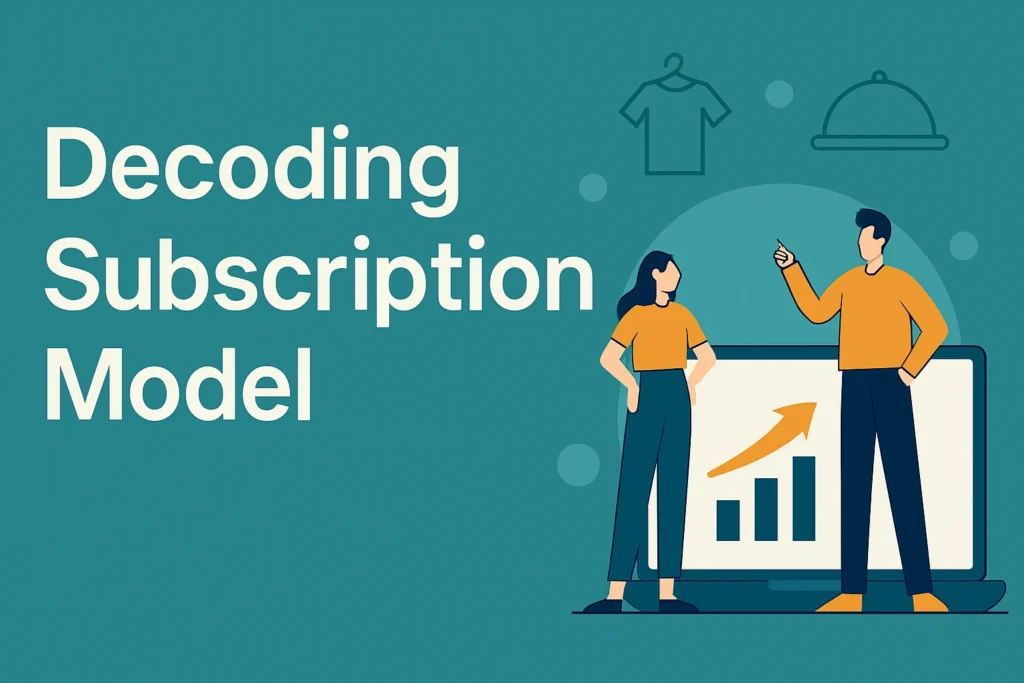Building Startups for the Subscription Economy: From Products to Services
In a world that’s increasingly shifting from ownership to access, the subscription economy has become a hotbed for innovation. From fashion to food, education to healthcare, recurring revenue models are redefining how businesses deliver value and how consumers experience it. Let’s explore how startups are riding this wave, turning everyday products and services into long-term relationships.
What Is the Subscription Economy and Why Is It Booming in 2025?
The subscription economy refers to the shift from one-time product purchases to recurring service-based models. According to Zuora’s Subscription Economy Index, subscription businesses have grown over 435% in the past decade. In 2025, consumers prefer flexibility, personalized experiences, and predictable pricing- driving massive growth in subscription-based startups.
How Subscription Models Are Transforming Traditional Product Businesses
Products are no longer sold- they’re subscribed to. Think about razors (Dollar Shave Club), beverages (Sleepy Owl), or even luxury handbags (Ziniosa). These brands have turned one-time transactions into monthly value delivery, keeping customers engaged and loyal.
Why Recurring Revenue Is the Future for Startup Profitability
One of the biggest advantages of the subscription economy is predictable recurring revenue. For startups, this means:
- Steady cash flow
- Higher customer lifetime value (LTV)
- Easier financial forecasting
- Greater appeal to investors who prioritize consistent revenue streams
The Rise of Food Subscription Startups in India and Globally
The food industry has been revolutionized by the subscription model. From ready-to-cook meal kits (like Blue Apron) to healthy snack boxes (such as Snackible), startups are capitalizing on urban demand for convenience, quality, and consistency.
In India, FreshMenu and iD Fresh Food offer recurring meal plans, while global giants like HelloFresh continue to scale.
How Education Is Adapting to the Subscription Economy
EdTech is moving from one-time courses to subscription-based learning platforms. Platforms like Skillshare, Unacademy, and BYJU’S offer monthly plans that grant users access to a library of content or live classes. These models not only boost user retention but allow for continuous content updates.
Clothing-as-a-Service: Fashion Startups Using Rentals and Rotations
Fashion is going circular. Startups like Rent the Runway in the U.S. and Stage3 or Flyrobe in India let users rent clothes on a subscription basis. This solves wardrobe fatigue and promotes sustainable consumption- perfect for a generation that loves variety but cares about the planet.
Healthcare-as-a-Subscription: Telehealth and Wellness Apps on Monthly Plans
From digital doctor consultations to mental wellness, healthcare startups are leveraging subscriptions to offer affordable, continuous care. Startups like HealthifyMe and Practo offer premium plans with added features- diet coaching, online consultations, and customized fitness.
How to Design a Scalable Subscription Startup Model
Building a successful subscription startup involves:
- Tiered pricing for different customer segments
- Personalization using AI and behavior tracking
- Easy cancellation and renewal policies
- Customer engagement via loyalty programs or added value
Key Metrics for Subscription Startups: CAC, LTV, MRR, and Churn
To grow sustainably in the subscription economy, founders must track:
- CAC (Customer Acquisition Cost)
- LTV (Lifetime Value)
- MRR (Monthly Recurring Revenue)
- Churn Rate
Balancing acquisition costs with lifetime value ensures long-term profitability.
Top Challenges in Building for the Subscription Economy- and How to Overcome Them
Despite its promise, the subscription model comes with challenges:
- Customer fatigue due to too many subscriptions
- Fulfillment consistency and logistics
- High churn rates if value isn’t perceived
Solutions include transparent pricing, regular feature updates, and excellent customer service.
Global vs. Local: Tailoring Subscription Models for Indian Consumers
Indian users are price-sensitive and value-rich experiences. Startups must account for regional preferences, offer trial periods, and support cash-on-delivery (COD) options to build trust.
The Future of the Subscription Economy: AI, Personalization, and Micro-Segments
AI will play a key role in personalizing the subscriber journey- from recommending products to predicting churn. Micro-segmentation will allow startups to craft targeted offers for specific user groups, increasing engagement.
Conclusion
The subscription economy is no longer a trend- it’s a transformation. For startups in India and globally, it offers a blueprint for sustainable growth, customer retention, and scalable success. Whether you’re delivering meals, lessons, outfits, or wellness plans- building for recurring value is the future.
Hi Friends, This is Swapnil Gupta, I am a Founder and Author at Startups Union.




